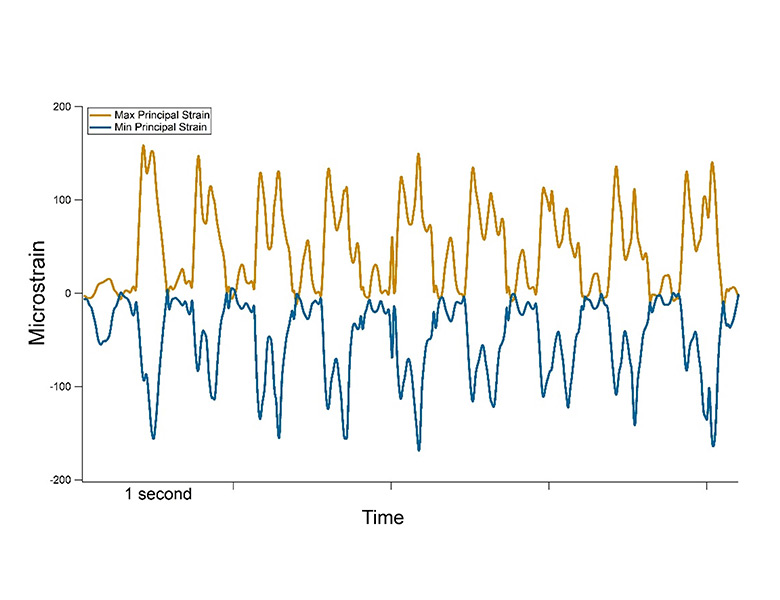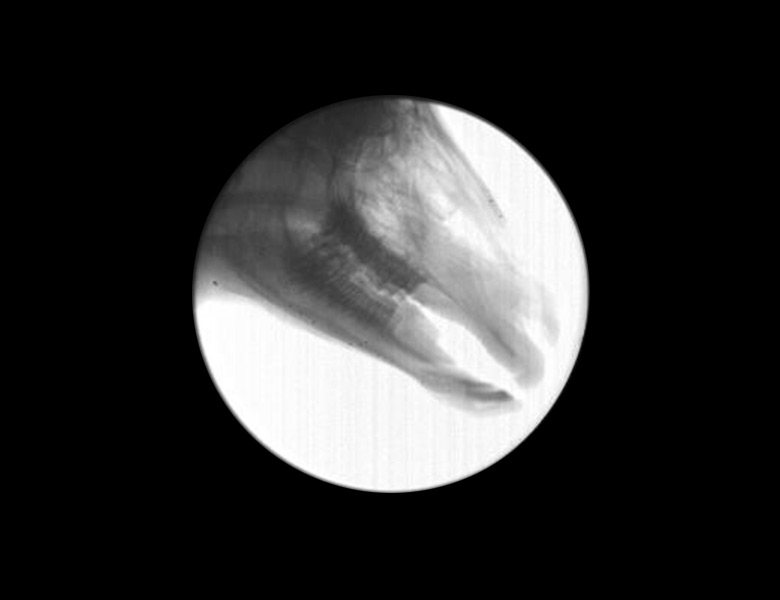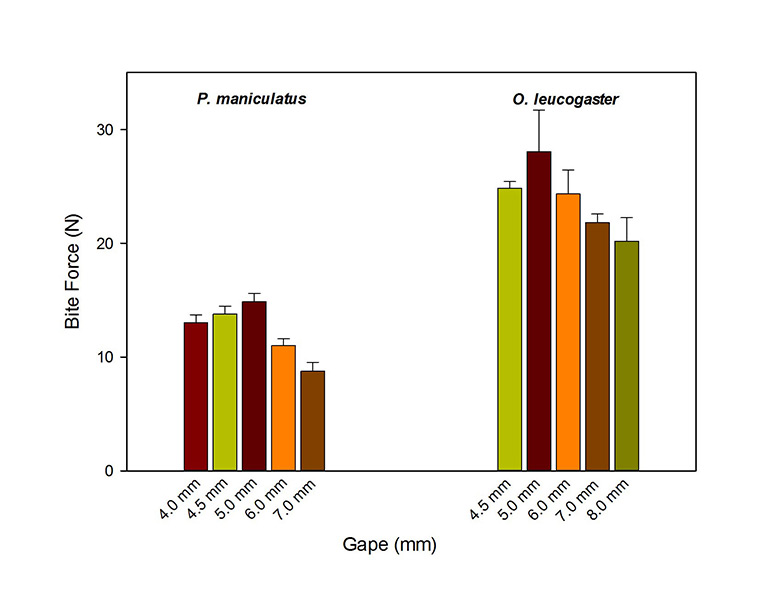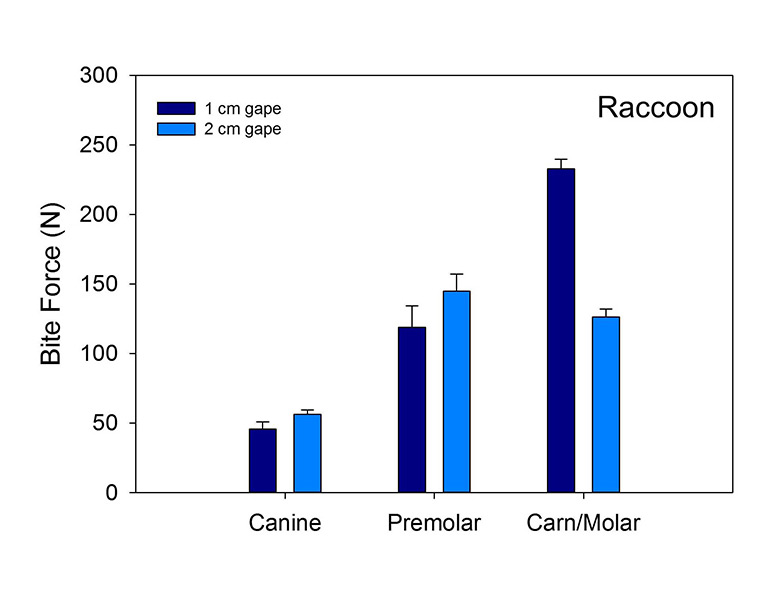Biomechanics of the Mammalian Masticatory Apparatus
The Williams lab integrates comparative and experimental studies to understand factors driving the evolution of mammalian masticatory form. This research program also explores how feeding behaviors change during ontogeny, and how this relates to skeletal growth and occlusion.
The dynamics of mastication, biting and other oral behaviors are investigated using electromyography to record the behavior of jaw muscles, strain gauge techniques to understand how the mandible and facial skeleton are loaded by external forces, X-ray Reconstruction of Moving Morphology to characterize jaw movements and occlusion during feeding, and bite force transducers to characterize bite force and biting mechanics. These data are often integrated with data on anatomical and morphological data derived from CT scans and dissections to understand form-function links in the feeding apparatus. Experimental work relating to the functional morphology and biomechanics of the mammalian masticatory apparatus has utilized a variety of species across Mammalia, including goats, alpacas, horses, kinkajous, ferrets, raccoons, and grasshopper and deer mice.
Ongoing work in the lab has focused on understanding the functional significance of ossification or fusion of the mandibular symphysis in some species of mammals. This work has taken both a broad comparative approach but also sought to link the ontogeny of symphyseal fusion to changes in motor control and coordination during chewing and to changes in occlusion during early postnatal growth and development.
This research has been funded by National Science Foundation grant IOS-0520855.
Selected Publications
- Stover K, JV Sidote and SH Williams. 2018. An ontogenetic perspective on symphyseal fusion, occlusion and mandibular loading in alpacas (Vicugna pacos). Zoology. https://doi.org/10.1016/j.zool.2017.06.006
- Williams SH, NR Lozier, SJ Montuelle and S de Lacalle. 2015. Effect of postnatal myostatin inhibition on bite mechanics in mice. PLoS ONE 10(8): e0134854. https://doi.org/10.1371/journal.pone.0134854.
- Williams SH, JV Sidote and KK Stover. 2010. Occlusal development and masseter activity in alpacas (Lama pacos). Anatomical Record 293: 126-134. https://doi.org/10.1002/ar.21016
- Williams, SH, KK Stover, JS Davis, SJ Montuelle. 2011. Mandibular corpus bone strains during mastication in goats (Capra hircus): a comparison of ingestive and rumination chewing. Archives of Oral Biology 56: 960-971. https://doi.org/10.1016/j.archoralbio.2011.02.014
- Williams SH, E Peiffer and S Ford. 2009. Gape and bite force in the rodents Onychomys leucogaster and Peromyscus maniculatus: does jaw-muscle anatomy predict performance? Journal of Morphology 270:1338-1347. https://doi.org/10.1002/jmor.10761




